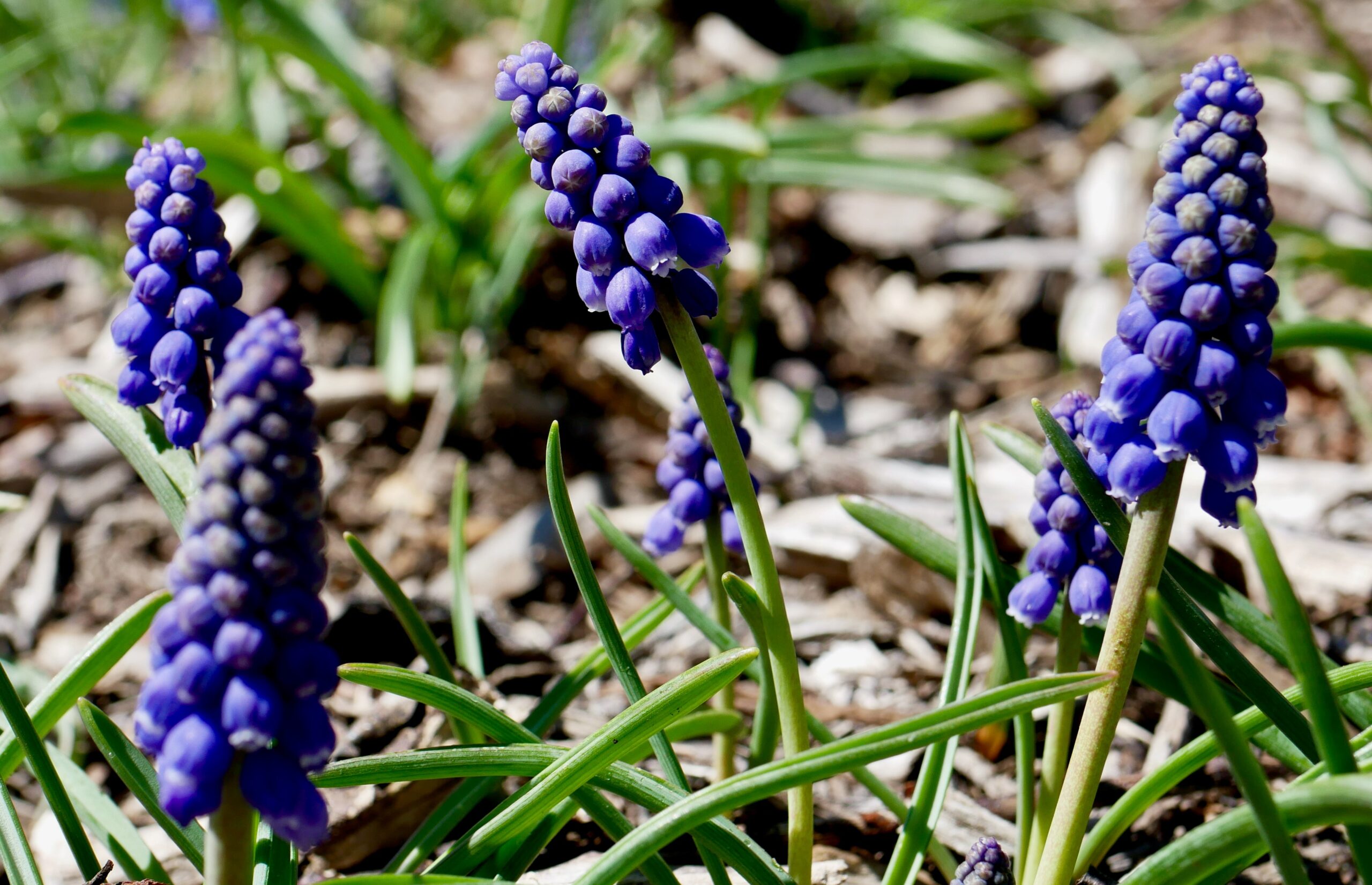MORGANTOWN — This week at the West Virginia Botanic Garden, at 1061 Tyrone Road, we will focus on some small flowers in bloom and one swimming resident.
As always, the closer you look, the more you see. And, in our Yagle Garden, you can enjoy something in bloom most of the year. In spring, it starts with some new additions at the lower entrance of the Yagle, where you can find about 100 grape hyacinths, Muscari armeniacum.
These little gems are a common choice for gardeners and the bigger the planting, the more dramatic the display. Interestingly, grape hyacinth is not related to hyacinth but in a different family, the Asparagaceae, making them closely related to asparagus.
In the lower bed near the main trail, you can find the lovely Grecian windflower (Anemone blanda) and glory of the snow (Chionodoxa forbesii). Grecian windflower is in the buttercup family, Ranunculaceae. It has bulb-like tubers and does well in sunny, well-drained soils. Its flowers attract bees, butterflies and other pollinators. Glory of the snow is another early spring bulb that can naturalize and provide a punch of color in spring.
Along the main flower beds in the Yagle Garden, you can now find spring starflower (Ipheion uniflorum) and striped squill (Puschkinia scilloides). Both of these early spring flowers are blue and white and can naturalize an area under the right conditions. Spring starflower is in the amaryllis family, while striped squill is in the asparagus family and therefore related to the grape hyacinth. All of these early spring flowers should be well watered when flowering to ensure good health.

What’s swimming at the WVBG
The WVBG is a great place not only for plants but also for a great range of animal life. And, in a world where many species are in decline, it is nice to know that the WVBG is a refuge for many animals.
The red-spotted newt, a subspecies of the eastern newt (Notophthalmus viridescens), can now be easily seen in the basin pond where the adults are mating. Take the Pond View Trail off the Reservoir Loop Trail and walk to the water’s edge to see these the newts swimming and mingling. The red-spotted newt can live as long as 12-15 years and can grow to about five inches in length.
After mating, the eggs will hatch into a larval stage with gills. After a few months, the larvae will shed their gills and transform into their terrestrial juvenile stage (also called the red eft). The red eft’s bright orange and red coloration is nature’s warning that it is poisonous — its tissues are saturated with tetrodotoxin, the same neurotoxin found in
pufferfish.
After two or three years, the eft returns to the pond and transforms into an olive-green adult, keeping its black-rimmed red spots. It also develops a larger, blade-like tail.
While not an endangered species, these little gems are susceptible to the same chytrid fungus that has decimated other amphibian populations worldwide, and we appreciate their presence at the garden.
Come to the WVBG to enjoy the little things in life!




